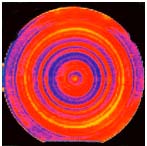
Photoluminescence
Photoluminescence (PL)
Photoluminescence spectroscopy is a non-contact, nondestructive method of probing the electronic structure of materials. In essence, light is directed onto a sample, where it is absorbed and where a process called photo-excitation can occur. The photo-excitation causes the material to jump to a higher electronic state, and will then release energy, (photons) as it relaxes and returns to back to a lower energy level. The emission of light, or luminescence through this process is photoluminescence, PL.
Our PL optimised series of spectrometers developed from our core spectroscopy expertise are used for wide-ranging evaluations, including compositional analysis of the epitaxial layer of compound semiconductors, defect evaluation of light-emitting materials, evaluation of surfaces, non-destructive evaluation of integrated optical circuits, quantitative analysis of impurities, and evaluation of various Laser Diodes and LEDs ranging from GaN to InP.
Theses products are also making a major contribution to the development of ultra-high-speed devices, quantum small-gauge nano-wires, quantum dots, and new materials such as SWCNTs.
Typical applications include :

- Band Gap Determination
- Impurity Levels and Defect Detection
- Recombination Mechanisms
- Material Quality
Photoluminescence spectrometers from HJY provide :
Confocal Mapping capabilities with sub-micron spatial resolution Various excitation wavelengths from the UV- NIR allowing control of the penetration depth into the material, and thus, control of the volume sampled. Detection of photoluminescence from UV to NIR using CCD and InGaAs/NIR detection. Sample temperature cells from 4 to 300 K.
